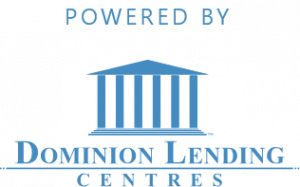
How Reverse Mortgages Work
How reverse mortgages work is a mortgage for seniors who are 55 or older that enables them to access the home equity in their homes as cash without having to give up ownership of the house. This mortgage allows them to supplement their retirement income and pay for medical expenses, none of which requires repayment until the homeowner leaves the home or passes away. With a reverse mortgage, the lender pays money to the senior while they continue living in their house and retain full control over it. The amount payable depends on various factors such as age, value of property, interest rate and type of mortgage plan. It’s important to note that these mortgages can come with fees so it’s advisable to do your research and find out if this is an option right for you before making any decisions.
How to Setup a Reverse Mortgage
For seniors who are looking for financial security in their retirement, a CHIP reverse mortgage can be one possible solution to their needs. A reverse mortgage is more complex than traditional mortgage options, and involves an equity loan against a homeowner’s primary residence that does not need to be repaid until after the homeowner moves away or passes away. To set up a reverse mortgage, young homeowners should first speak with a mortgage broker, who will guide them through the different types of loans available and explain the details related to cost and terms. This research phase will help ensure this long-term commitment is in line with the individual’s current financial situation and retirement objectives.
Benefits of a Reverse Mortgage
Reverse mortgages are mortgage solutions specifically designed to suit the needs of retirees. They provide a number of distinct benefits to those looking to improve their financial situation as they enter retirement. A reverse mortgage can be used as a source of income or to augment existing retirement savings, allowing for increased expenditures and overall financial security during retirement. The mortgage is further distinguished by its emphasis on flexibility – mortgage payments are tied by no end date or standard monthly payment schedule, and the agreement can be set up in various ways to meet an individual’s changing needs over time. Reverse mortgage lenders can offer a wealth of knowledge on these types of mortgage solutions, providing additional peace-of-mind and invaluable guidance throughout the process.
Flexibility of a Reverse Mortgage
Reverse mortgages have become a flexible option for those in retirement to supplement income and sustain their quality of life. A mortgage is an agreement between the borrower (homeowner) and the lender that requires a repayment plan to be established. Through reverse mortgage loans, borrowers can access the equity they’ve accumulated in their home without making monthly mortgage payments. As long as the borrower continues to meet the loan’s basic needs, they are not required to make mortgage payments. Additionally, they do not need to return any money to the bank until they sell, move out permanently, or pass away.
Reverse mortgages offer great flexibility with regards to how much money an individual can borrow, depending on factors like loan type, interest rate, and location of residence. Additional flexibilities found with reverse mortgage loans include no prepayment penalties at the maturity of the term and no minimum credit scores needed as part of loan qualifying. With so many options available, reverse mortgage loans provide an ideal solution for retirees who need access to cash while remaining in their homes. Call us today to discuss.
FAQs
What is a reverse mortgage?
A reverse mortgage is a loan that allows you to get money from your home equity without having to sell your home. This is sometimes called “equity release”. You can borrow up to 55% of the current value of your home.
The maximum amount you’re able to borrow will depends on:
- your age
- your home’s appraised value
- your lender
You pay back your loan when you move out of your home, sell it or the last borrower dies. This means you don’t need to make any payments on a reverse mortgage until the loan is due. You will owe more interest on a reverse mortgage the longer you go without making payments. At the end of your loan term, you may have less equity in your home.
How much a reverse mortgage can cost
Costs associated with a reverse mortgage may include:
- a higher interest rate than for a traditional mortgage
- a home appraisal fee
- a setup fee
- a prepayment penalty if you pay off your reverse mortgage before it is due* (under certain conditions)
- legal fees for closing costs or independent legal advice
The costs will vary depending on your lender. Some fees may be added to the balance of your loan. You may have to pay for others up front.
How does a reverse mortgage work?
Before getting a reverse mortgage, you must first pay off and close any outstanding loans or lines of credit that are secured by your home. These can include a mortgage and a home equity line of credit (HELOC). You can use the money you get from a reverse mortgage to do this.
These are all great examples of how a reverse mortgages work for you:
- pay for home repairs or improvements
- help with regular bills
- cover healthcare expenses
- repay debts
A reverse mortgage may limit other financing options secured by your home. You may not be able to take out a HELOC or similar products.
You may be able to get the money from your loan by:
- taking the money as a one-time lump sum
- taking some of the money up front and taking the rest over time
Ask your broker what payment options they offer for a reverse mortgage. Also ask whether there are any restrictions or fees.
Pros and cons of a reverse mortgage
Before you decide to get a reverse mortgage, make sure you consider the pros and cons carefully.
Pros
- you don’t have to make any regular loan payments
- you may turn some of the value of your home into cash, without having to sell it
- you don’t pay tax on the money you borrow
- this money doesn’t affect the Old-Age Security (OAS) or Guaranteed Income Supplement (GIS) benefits you may be getting
- you still own your home
- you may have options as to when and how you receive the money
Cons
- interest rates are higher than most other types of mortgages
- the equity you hold in your home may go down as you accumulate interest on your loan
- your estate has to repay the loan and interest within a set period of time when you die
- the time needed to settle an estate may be longer than the time allowed to repay a reverse mortgage
- there may be less money in your estate to leave to your children or other beneficiaries
- costs associated with a reverse mortgage may be higher than a regular mortgage or other credit products
What to ask your Broker before getting a reverse mortgage
Before getting a reverse mortgage, ask your broker:
- how you can get the money from a reverse mortgage
- if there are any fees you have to pay
- what interest rate you have to pay on the money you borrow
- what can cause you to default on the loan
- any penalties you have to pay if you sell your home within a certain period of time
- how much time you have to pay off the loan’s balance if you move
- how much time your estate has to pay off the loan’s balance if you die
- what happens if it takes your estate longer than the stated period to fully repay the loan when you die
- what happens if the amount of the loan ends up being higher than your home’s value when it’s time to pay the loan back

